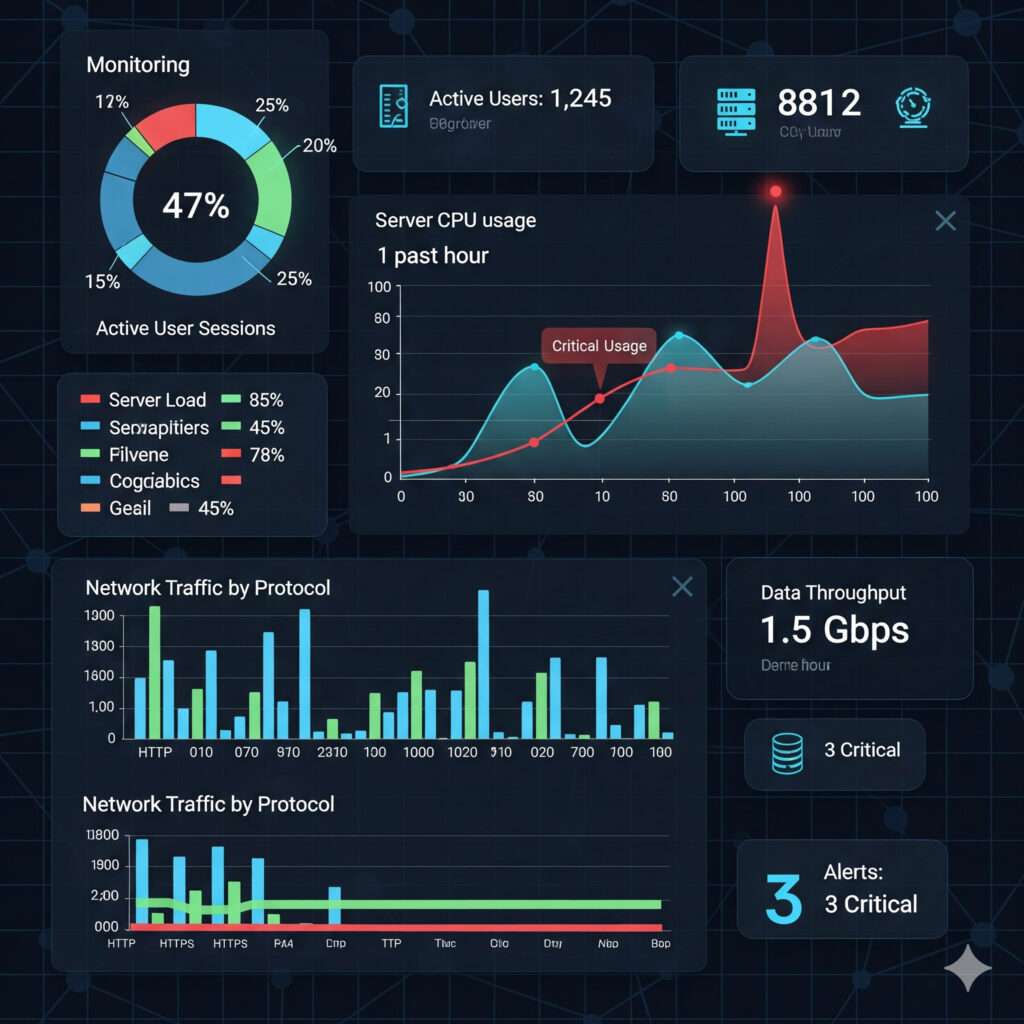Incident Management and Monitoring: Stronger Together
Modern IT infrastructures are made up of complex and constantly changing systems. Even the smallest glitch in a system can negatively impact user experience and halt business processes. This is where incident management and monitoring come in. So, how do these two concepts complement each other, and why have they become an inseparable pair for a successful operation?

What is Incident Management?
Simply put, Incident management is the process of detecting, analyzing, and resolving disruptions or issues in an IT service as quickly as possible. This process isn’t just a technical problem-solving task; it’s also a communication and coordination mechanism. Incident management seeks answers to questions like: “What problem has emerged?”, “What is the impact of this problem?”, “Who needs to be informed?”, and “How will the problem be resolved?”. Its goal is to minimize service disruptions and ensure operational continuity.
What is Monitoring?
Monitoring is the continuous process of tracking and observing the performance of systems, networks, and applications. This includes regularly collecting metrics like server CPU usage, memory consumption, network traffic, and application response times. A monitoring tool generates an alert when a defined threshold is exceeded or when anomalies are detected. Monitoring is, in a way, like taking the pulse of the system.
The Critical Relationship Between Incident Management and Monitoring
Incident management and monitoring are two fundamental functions that complement each other. We can think of this relationship as a detective story:
1. Gathering Evidence (Monitoring): Monitoring tools take the first step by detecting abnormal system behavior. For example, a tool might notice that a website’s response time suddenly slows down and sends an alert. This alert is the first “evidence” of a potential event.
2. Starting the Investigation (Incident Management): The alert generated by monitoring triggers Incident. An “event” now exists, and its severity, impact, and potential solutions are examined.
3. Resolution and Reporting: The Incident management process finds the root cause of the problem and takes the necessary actions. Once the resolution is complete, a reporting and improvement process begins to prevent similar issues from occurring in the future.
A successful Incident Management process relies on a robust monitoringinfrastructure. Monitoring is the eyes and ears of incident management. Thanks to early warning systems, potential problems can be identified before users are even affected.
Tips for a Successful Integration
For Incident management and monitoring processes to work efficiently, integration is crucial. Here are some tips to strengthen this integration:
- Use Automation: Route alerts from monitoring tools directly to your incident management platform. This reduces manual intervention and shortens the time to respond to an event.
- Define Clear Rules: Pre-define which alerts will be classified as an “event” and which teams they should be assigned to. This prevents confusion and ensures quick action.
- Create a Feedback Loop: When an event is resolved, use that experience to improve your monitoring strategy. For instance, add new monitoring metrics or thresholds for frequently recurring issues.
- Strengthen Inter-team Communication: Establish a seamless communication channel between development, operations, and support teams. Incident management should be a platform where everyone speaks the same language.
Conclusion
Incident management and monitoring are the fundamental building blocks that maintain the health of an IT infrastructure and continuously improve it. Monitoring is a proactive mechanism that ensures early detection of problems. Incident management, on the other hand, provides the strategy and process needed to resolve these problems in the fastest and most effective way possible. The harmonious operation of these two systems not only reduces downtime but also increases operational efficiency and strengthens user trust. This is why it’s essential to remember that these two concepts are an inseparable whole for successful IT operations.
Fill the Form, We’ll Reach Out!


